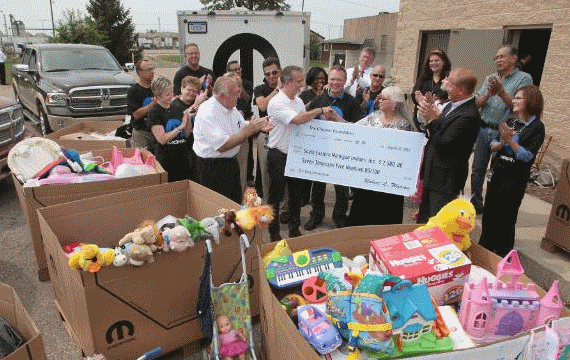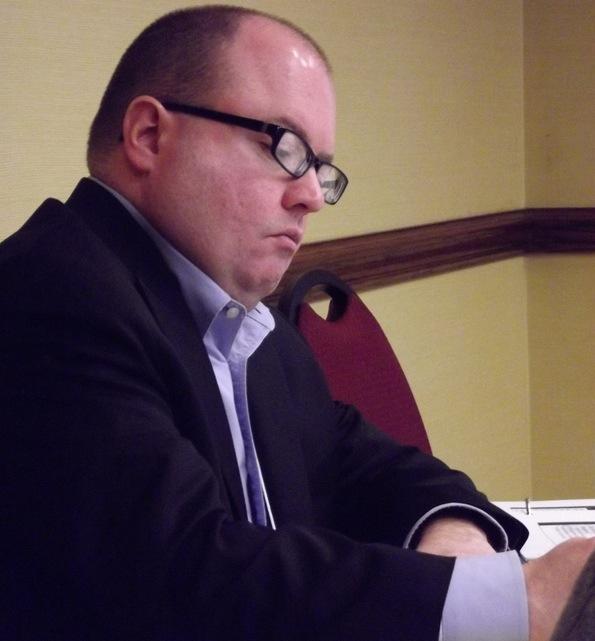Patrick Bond; Source: Climate Connections
The northern hemisphere summer has just peaked and though the torrid heat is now ebbing, it is evident the climate crisis is far more severe than most scientists had anticipated. The latest report of the UN Intergovernmental Panel on Climate Change – a notoriously conservative research agency – will be debated in Stockholm next month, but no one can deny its projections: “widespread melting of land ice, extreme heat waves, difficulty growing food and massive changes in plant and animal life, probably including a wave of extinctions.”
Even worse is coming, for a giant Arctic Ocean “belch” of 50 billion tonnes of methane is inexorably escaping from seabed permafrost, according to scientists writing in the journal Nature. North Pole ice is now, at maximum summer heat, only 40 per cent as thick as it was just 40 years ago, a crisis only partially represented in the vivid image of a temporary “lake” that submerged the pole area last month.
The damage that will unfold after the burp, according to leading researchers from Cambridge and Erasmus Universities, could cost $60 trillion, about a year’s world economic output. Global warming will speed up by 15-35 years as a result.
With these revelations, it is impossible to mask the self-destructive greed of fossil-fuel firms and their carbon-addicted customers. The ruling crew in the United States, Russia and Canada will enthusiastically let oil companies exploit the soon-to-be ice-free Arctic summers with intensified drilling, joined by unprecedented bunker-fuel-burning in the newly opening shipping lanes.
Heat blowback in the US, China and Durban
But the extreme weather that necessarily results has just hit China, whose world-record CO2 emissions – mainly a result of producing junk purchased by wealthier countries which have outsourced their industrial emissions to East Asia – generate as a byproduct not only thick layers of smog in the main cities. There were also scores of heat-related deaths earlier this month. Shanghai suffered 10 straight days above 38C, with temperatures in some places high enough to use a sidewalk to fry eggs and prawns.
In the second-biggest greenhouse gas emitter (and biggest historically), the western United States is suffering a brutal drought, so severe that 86 per cent of New Mexico’s water supply evaporated, extreme wildfires broke out – this week, for example, scorching Yosemite Park’s legendary redwoods and threatening San Francisco’s water supply – while California’s Death Valley temperatures soared to 50C.
The effects are highly uneven, with environmental-justice research now proving that as climate change hits US cities, the wealthy turn up the air conditioner while the poor – and especially black and Latino people – suffer in “heat islands”. Likewise, poor people in the Himalayan mountains died in their thousands as a result of last month’s floods.
In Alaska, a source of enormous oil extraction, record temperatures in the 30s left thousands of fish dead. The effect of global warming on the oceans is to push marine life towards the poles by seven kilometres each year, as numerous species attempt to find cooler waters.
The impact here in South Africa, from East London to Durban, was a disaster for the local fishing industry last month, as billions of sardines which annually swim to shore stayed away due to warmer waters.
Can shipping survive the climate chaos it causes?
And here along the Indian Ocean, more local climate damage comes from – and is also visited upon – the shipping industry. In the world’s largest coal export site, South Africa’s Richards Bay harbour, an idiot captain of the China-bound MV Smart (sic) tried to exit the port in 10-metre swells on August 20 with a load of nearly 150,000 tonnes of coal and 1700 tonnes of oil. He promptly split the huge ship in half on a sandbank.
This followed by hours the strategic offshore sinking of a Nigeria-bound cargo ship, Kiani Satu, which had run aground a week earlier, further down the coast, close to a nature reserve and marine protected area. As plans were made to extract 300 tonnes of oil from the boat, more than 15 tonnes spilled, requiring the cleaning of more than 200 oil-coated seabirds.
The maniacs whose ships now rest at the bottom of the Indian Ocean can identify with the fly-by-night owners of the MT Phoenix, after that ship’s willful self-destruction off the Durban north coast holiday resorts exactly two years ago. Taxpayers spent $4 million pumping out 400 tonnes of oil and then towing the Phoenix out deeper to sink. A few weeks ago, that salvage operation’s contested audit resulted in the implosion of the South African Maritime Safety Authority.
These are just some surface-level indications that our shipping industry is utterly ill prepared for the rise of both overall sea levels and the “monster waves” which accompany climate change. The Columbia University Earth Institute now projects “sea-level rise of as much as six feet globally instead of two to three feet” by 2100, with higher amounts (three metres) possible if further ice sheets crack from their foundations.
As Susan Casey, wrote in her book, The Wave: In Pursuit of the Rogues, Freaks, and Giants of the Ocean, “Given that 60 per cent of the world’s population lives within 30 miles of a coastline, wave science is suddenly vital science, and the experts are keenly aware that there are levees, oil rigs, shorelines, ships and millions of lives at stake.”
Her experts need to visit South Africa, because ours are apparently asleep at the wheel, as they now plan an extreme makeover of Durban’s harbour. The shipping mania that made China such a successful exporter – and wiped out so much of South Africa’s manufacturing industry – has generated vessels that can carry more than 10,000 containers (which in turn require 5800 trucks to unload), known as “super post-Panamax”. They are so named because the Panama Canal’s current limits allow only half that load, hence a $5.25 billion dig will deepen and widen the canal by 2015, with a $40 billion Chinese-funded competitor canal being considered in nearby Nicaragua.
Most ports around the world are following suit, including here where $25 billion is anticipated from national, provincial and municipal subsidies and loans for South Durban’s port/petrochemical complex – the origin of our status as the most polluted African suburb south of Nigeria. The project is mainly managed by Transnet, a huge (but hot-to-privatise) transport state-owned agency, and is the second main priority in the the African National Congress government’s National Development Plan, which claims that from handling 2.5 million containers in 2012, Durban’s productivity will soar to 20 million containers annually by 2040 – though these figures certainly don’t jell with the industry’s much more conservative projections of demand.
More examples of state planning hubris: Transnet’s $2.3 billion doubling of the Durban-Johannesburg oil pipeline is still not complete, but already massive corruption is suspected in the collusion-suffused construction industry, given that early costings were half the price. And notwithstanding their “aerotropolis” fantasies, Durban’s King Shaka International Airport and the speedy Johannesburg-Pretoria-airport Gautrain are both operating at a tiny fraction of the capacity that had been anticipated by state planners. The 2010 Soccer World Cup sports stadiums are such blatant white elephants that even arrogant local soccer boss Danny Jordaan felt compelled to apologise.
Climate denialists from Durban to Deutschland
One reason they breed is that climate is not being factored into any of these carbon-intensive white elephants, as I have learned by fruitlessly offering formal Environmental Impact Analysis objections. As a result of a critique I offered last November, Transnet’s consultants finally considered prospects that sea-level rise and intense storms might disrupt the Durban port’s new berth expansion.
But Transnet’s study on sea-level rise by Christopher Everatt and John Zietsman of ZAA Engineering Projects in Cape Town is as climate-denialist as the consultancy report last year by the South African Council on Scientific and Industrial Research’s Roy Van Ballegooyen. I do understand that – like the dreaded AIDS-denialism of a decade ago – the allegation of climate-denialism is a strong insult these days. But what else would you call a November 2012 report (mainly by Everatt) that cites five studies to claim we will suffer only a maximum 0.6 metre maximum sea-level rise this century, but based on data from 1997, 2004, 2006 and 2008 reports. Five years old information is, in this field, ridiculously outdated.
In South Africa, de facto climate denialists are now led by a South African Communist Party leader: minister of trade and industry Rob Davies. Last week, Davies pushed through cabinet approval to build yet another coal-fired power plant plus permission to frack the extremely water-sensitive Karoo, “Land of the Great Thirst” in the original inhabitants’ San language.
Awful precedents Davies tactfully avoided mentioning include the massive environmental damage and the corruption, labour-relations and socio-ecological crises at South Africa’s main coal-fired powerplant construction site, Eskom’s $10 billion Medupi generator which at 4800 megawatts will be the world’s third largest. Medupi was meant to be generating power in 2011, but due to ongoing conflict, may finally be finished only in mid-2014.
Eskom’s main beneficiary, also unmentioned by Davies, is BHP Billiton, the world’s largest mining house, a firm at the centre of South Africa’s crony-capitalist nexus dating to apartheid days. Eskom now subsidises this Australian company with $1.1 billion annually by gifting it the world’s cheapest electricity.
Another de facto climate denialist is the German development aid minister, Dirk Niebel, an opponent of Ecuadoran civil society’s plan to save the Yasuni National Park from oil exploitation. According toNiebel, “Refraining from oil drilling alone is not going to help in forest preservation.” Of course not, but it could have been a vital step for Germany to make a downpayment on its huge climate debt to the victims of extreme weather.
The Yasuni campaign to “leave the oil under the soil” is excellent, and while there, deep in the Amazon on the Peruvian border two years ago, I witnessed the Oilwatch network mobilising to expand the idea(even to Durban where oil prospecting recently began offshore). Oilwatch generated a “Yasunization” strategy for other fossil fuels, also promoted by the Environmental Justice Organisations, Liabilities and Trade scholar-activist network based in Barcelona. Network leaders Joan Martinez-Alier and Nnimmo Bassey are also heartbroken at Yasuni’s apparent demise.
The government of Rafael Correa – trained in the US as an economist – always had the intention to sell Yasuni into the global carbon markets, a self-defeating strategy given the markets’ tendency to both fraud and regular crashing; carbon prices today only about a quarter of what they were two years ago.
So now, because the erratic Correa doesn’t have his hands on the cash yet, in part because he failed to address world civil society to put pressure on governments, Ecuador’s PetroAmazonas and China’s PetroOriental will go ahead and drill. A fresh campaign has been launched to halt the extraction, starting with one letter after another from Accion Ecologica, the eco-feminist lobby that initiated the project, joined by the eloquent leader of the Confederación de Nacionalidades Indígenas del Ecuador, Carlos Perez Guartambel.
Climate activist counter-power gathers
Yasuni is a critical place to draw the line, for it is probably the world’s most biodiverse site. But there are other vulnerable points of counter-power, too, as across the world, many more defenders of nature come forward against rapacious fossil-fuel industry attacks.
South Africa has not been particularly climate-conscious, because the thousands of recent social protests are mainly directed against a state and capitalists which deny immediate needs, from municipal services to wages. Still, in Johannesburg, the Anglo American Corporation and Vedanta coal-fired power plant witnessed a protest of 1000 community and environmental activists last month.
Surprisingly, a Pew Research Centre poll found that 48 per cent of South Africans worry “global climate change” is a “major threat”, followed by “China’s power and influence” (40 per cent) and “international financial instability” (34 per cent). Across the world, 54 per cent of people Pew asked cited climate change as a major threat, the highest of any answer (in second place, 52 per cent said “international financial stability”). Only 40 per cent of the US populace agreed, putting it at seventh place.
Yet even in the belly of the beast, more people seem to be mobilising, and there are growing connectivities in the spirit that what happens in Yasuni is terribly important to the First Nations activists of western Canada (one of the finest blog sites to make these links is http://climate-connections.org/).
For example, fossil fuel projects have been fought hard in recent weeks by forces as diverse as Idaho’sNez Perce Native Americans, Idle No More and Wild Idaho Rising Tide; by Nebraska farmers; by activists from the filthy oil city of Houston who are contesting a new coal terminal; and in Utah where not only have conservationists sued to halt drilling of an 800,000-acre tar sands field stretching into Colorado and Wyoming, but 50 activists physically blocked tar sand mining and construction at two sites last month.
350.org’s Bill McKibben recently mentioned the “Summerheat” rebirth of US climate activism, “from the shores of Lake Huron and Lake Michigan, where a tar-sands pipeline is proposed, to the Columbia River at Vancouver, Washington, where a big oil port is planned, from Utah’s Colorado Plateau, where the first US tar-sands mine has been proposed, to the coal-fired power plant at Brayton Point on the Massachusetts coast and the fracking wells of rural Ohio”.
The growing movement has had results, says McKibben, in part through civil disobedience: “In the last few years, it has blocked the construction of dozens of coal-fired power plants, fought the oil industry to a draw on the Keystone pipeline, convinced a wide swath of US institutions to divest themselves of their fossil fuel stocks, and challenged practices like mountaintop-removal coal mining and fracking for natural gas.”
This is encouraging partly because summertime is a lull when it comes to challenging power in many parts of the world. Meanwhile, our political winter was mostly spent wondering whether the crucial Congress of South African Trade Unions would remain aligned to the government or split in half. The more enlightened wing would logically move towards environmental, community and social struggles, leaving behind the likes of Rob Davies, just as US progressives (should) have shed any last illusions about slick Barack Obama.
But not far from Durban, 100 years ago next month, Mahatma Gandhi began preparing a non-violent mass assault on a white-owned coal mine in support of both Indian women’s right to cross a regional border and workers’ wage demands. The idea known as satyagraha (truth force) went from theory to practice, as militant passive defiance gained concessions that, 80 years later, helped free South Africa from apartheid. This time, there’s no 80-year window; we all have to rise to the challenge as fast as do the thermometer and the greenhouse gas emissions.























